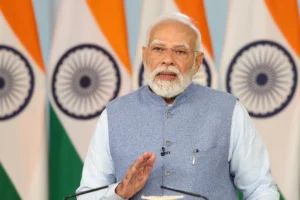
India’s economic growth is facing potential risks due to reform and policy barriers, according to research by Moody’s Investors Service. With India’s position as the world’s most populous country and the fifth-largest economy, these challenges could impede investment in the country’s manufacturing and infrastructure sectors, it added.
Moody’s Investors Service underscored the significance of addressing these barriers to fully unlock India’s growth potential. Limited economic liberalization and slower policy implementation pose threats to the country’s investment landscape, according to the report.
The report pointed out that rising per capita income and a growing working-age population are driving consumption in India. The presence of a young and educated workforce, the increasing number of nuclear families, and rapid urbanization contribute to a strong demand for housing, cement, and new cars. The government’s focus on infrastructure spending further strengthens the steel and cement industries, while India’s commitment to achieving net-zero emissions drives investments in renewable energy.
Moody’s considers the larger production capacity in these sectors as a credit positive for rated companies, as long as they effectively manage execution risks with financial discipline.
Looking ahead to 2030, India has set ambitious goals to achieve significant growth across multiple sectors. The manufacturing and infrastructure sectors are expected to grow at an annual rate of 3% to 12% throughout the decade. However, India’s capacity is projected to remain behind that of China, which currently holds a stable A1 rating from Moody’s.
Leading companies in India are planning investments of around $150 billion to expand capacity, necessitating access to multiple funding sources. Moody notes that most rated companies can handle a rise in debt to support these investments.
The success of India’s infrastructure development and transition to green energy depends on substantial investment. Favorable policies and cost competitiveness are expected to support India’s target of tripling its renewable energy capacity to 500 gigawatts by 2030.
Additionally, increased investments in airports will drive rapid expansion in the aviation sector. The ability of rated companies to deliver on planned investments will rely on the availability of funding, with the private sector playing a crucial role. However, Moody warns that leverage for rated companies involved in the rollout is expected to remain high.
With central bank controls in place, corporate growth in India is anticipated to be primarily funded domestically. A cost ceiling on foreign-currency borrowings restricts cross-border issuance to blue-chip companies. Consequently, banks and the domestic bond market will play a significant role in financing new investments. Indian banks have the capacity to expand their loans by approximately 15% over the next two years, with private sector banks well-positioned for growth.
To read more such news, download Bharat Express news apps



















